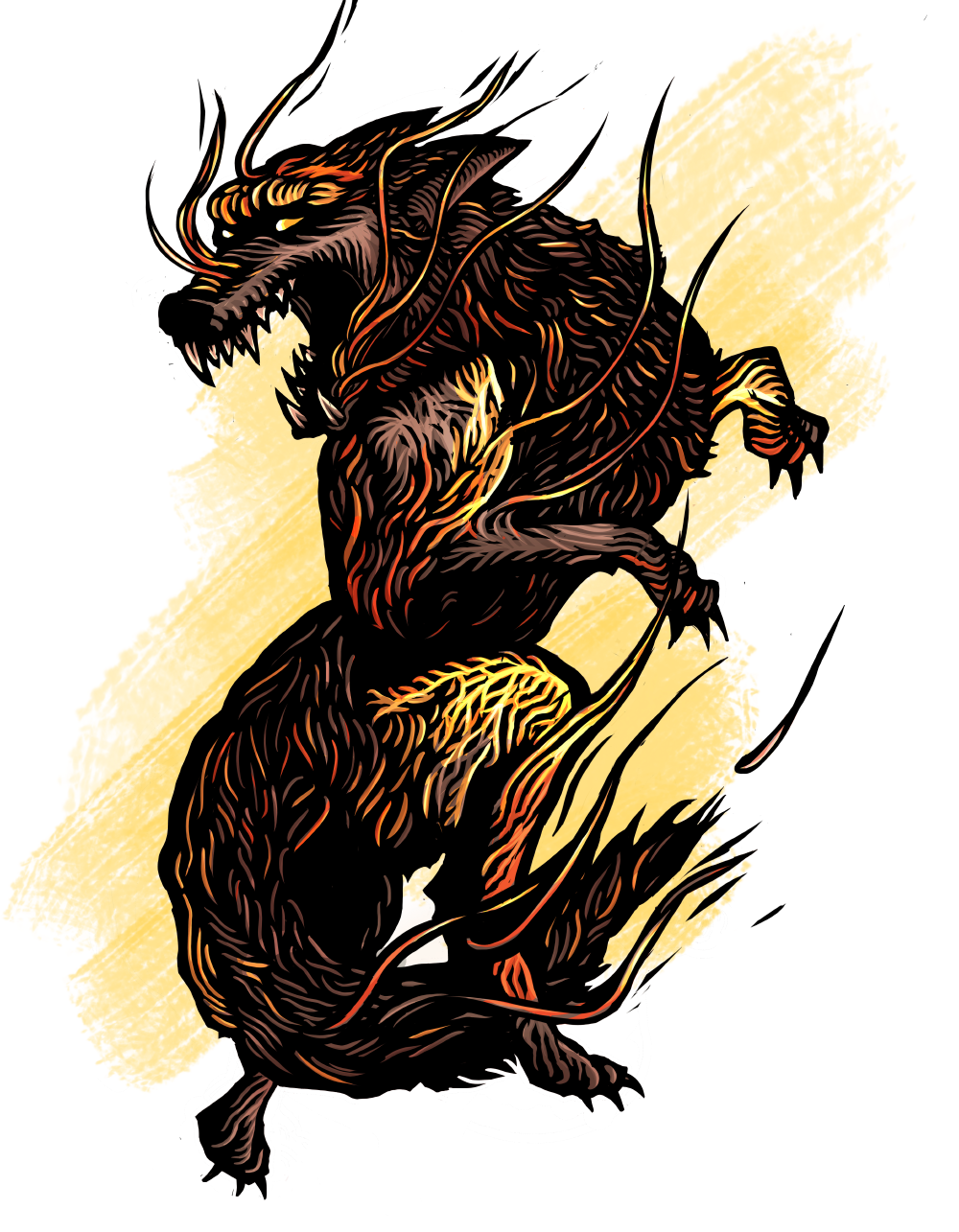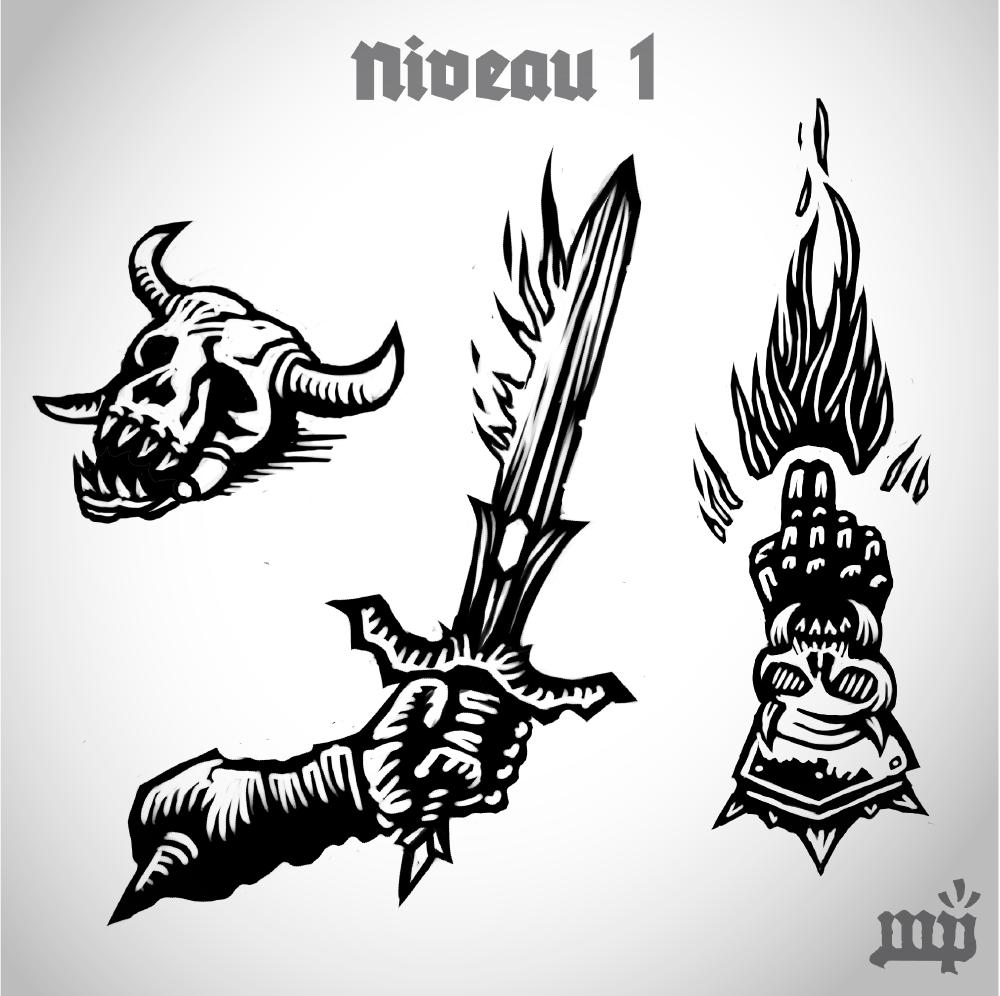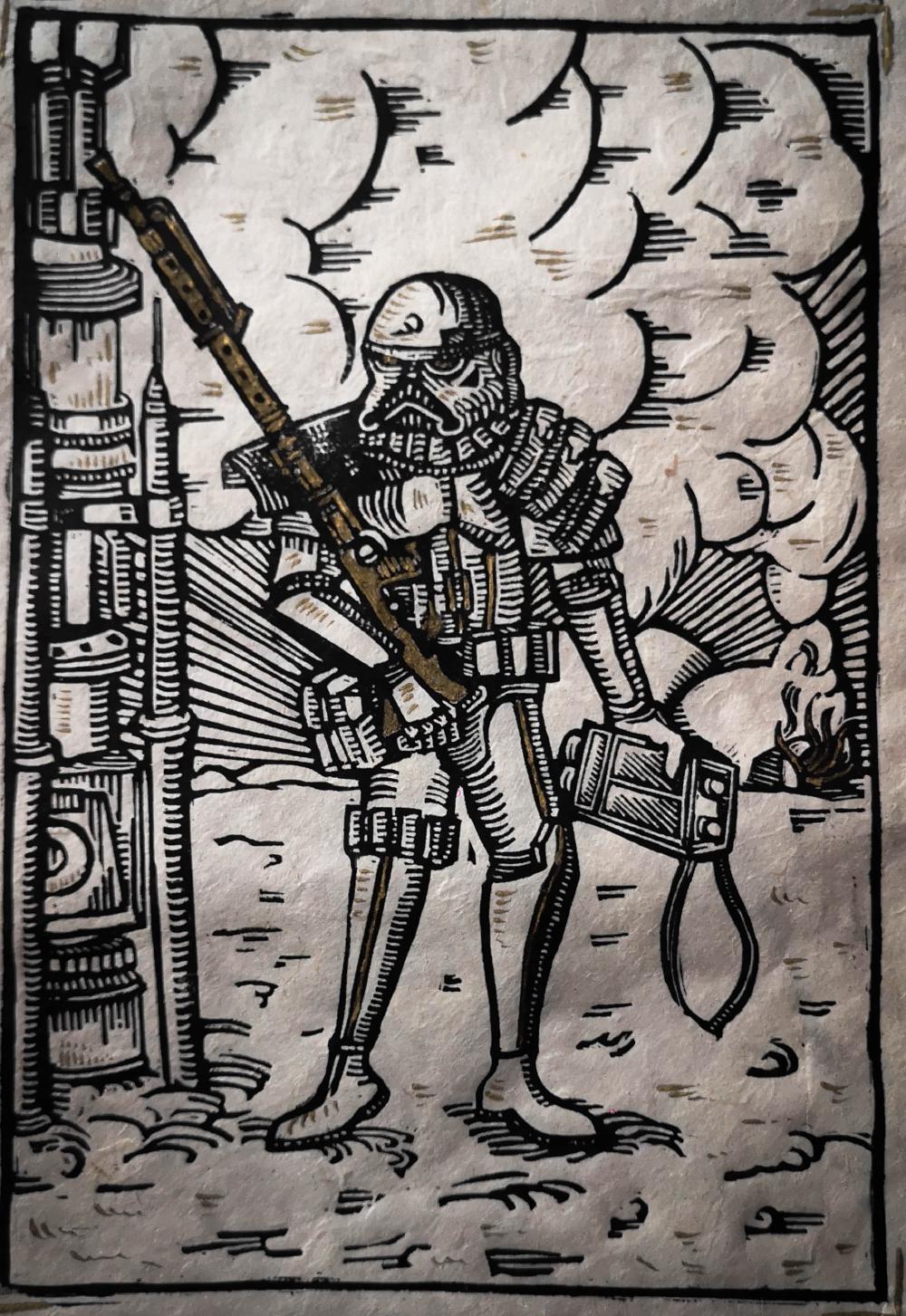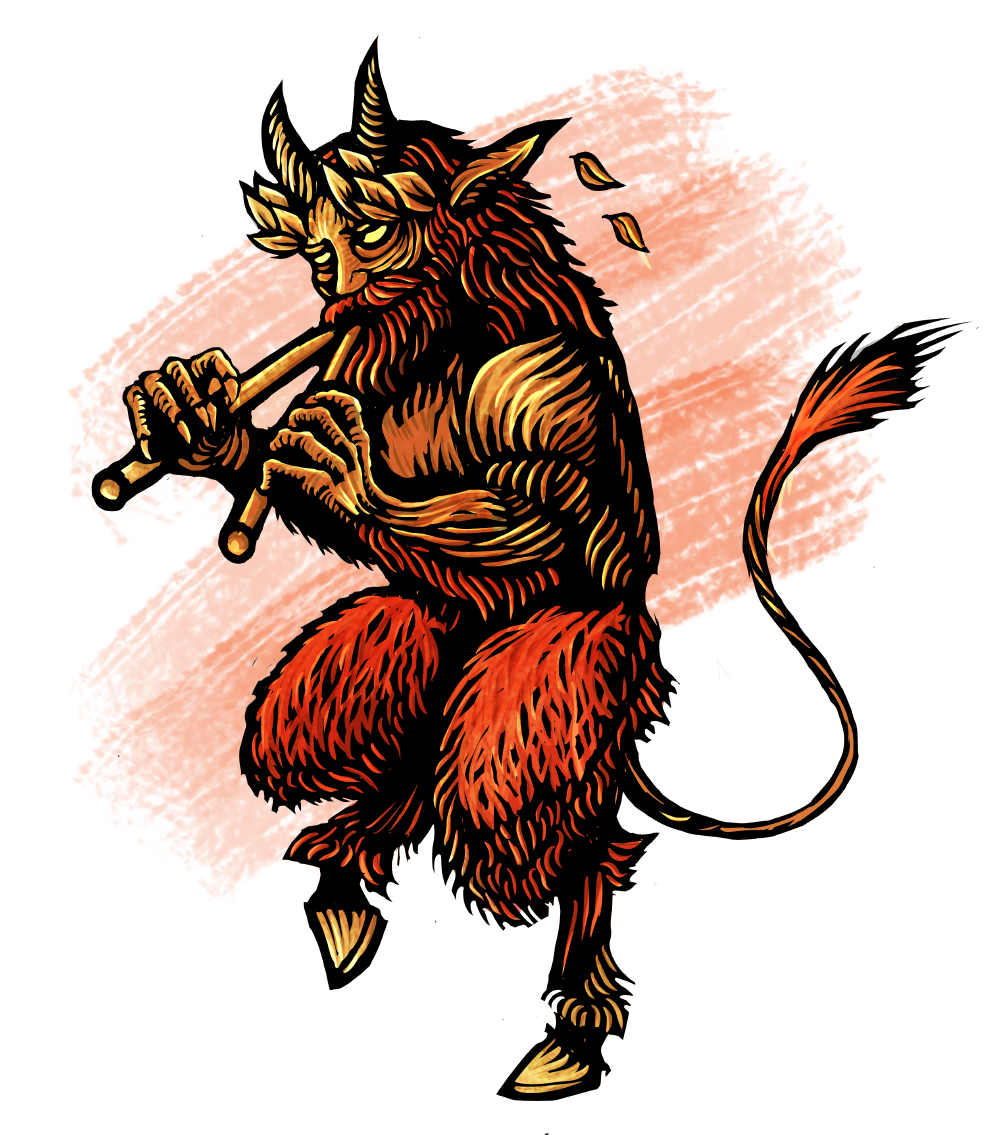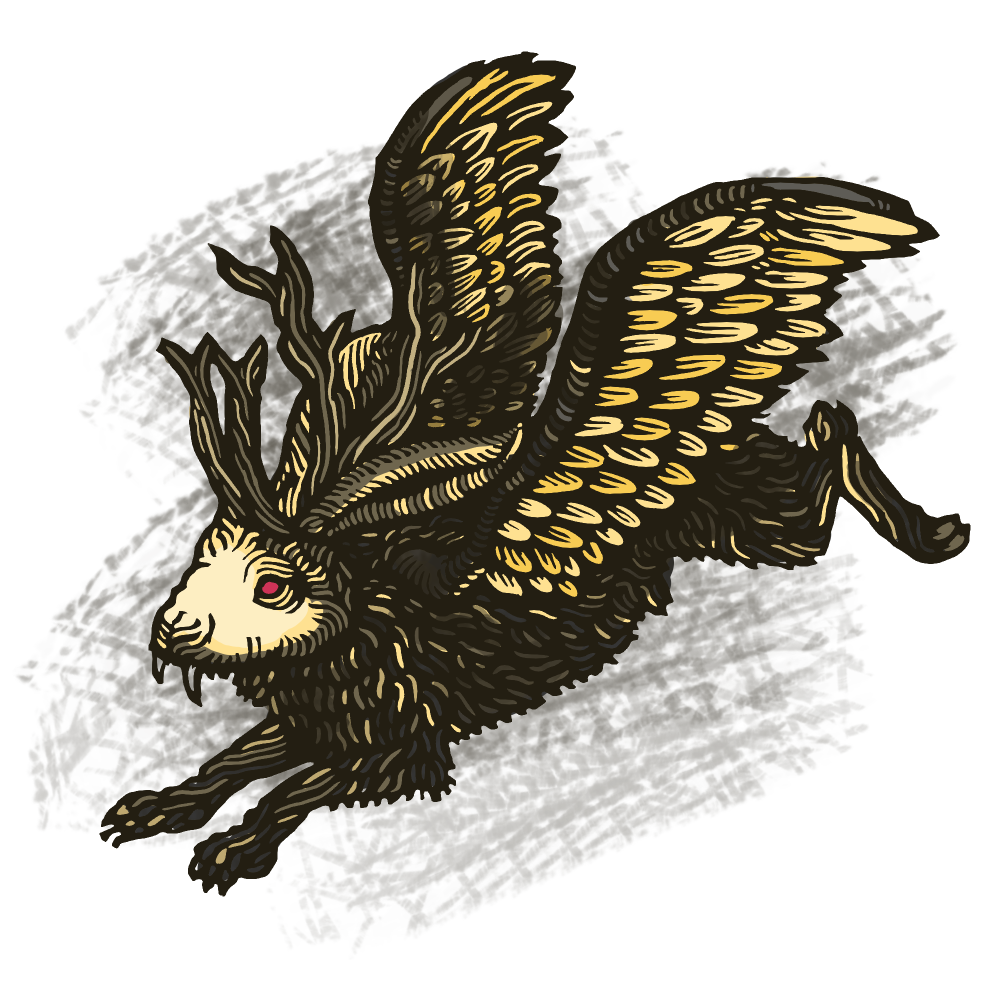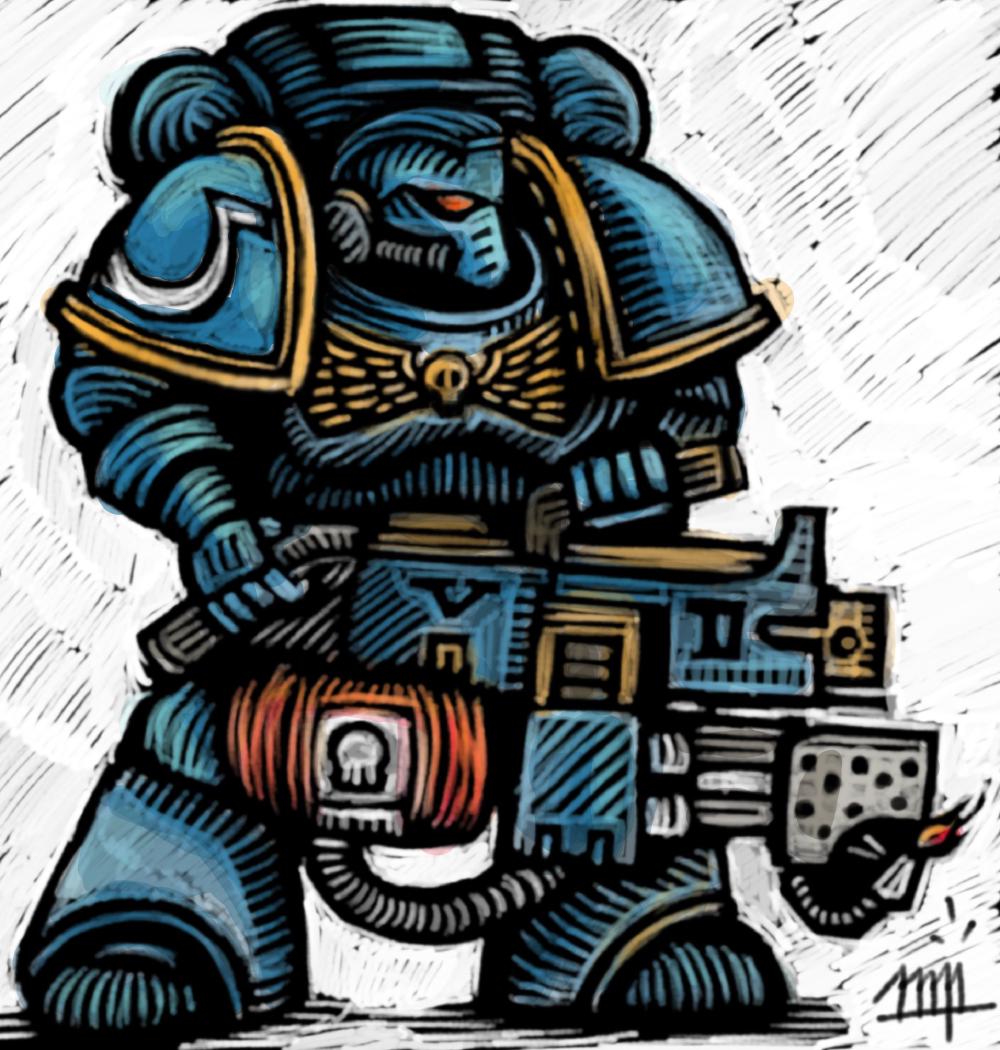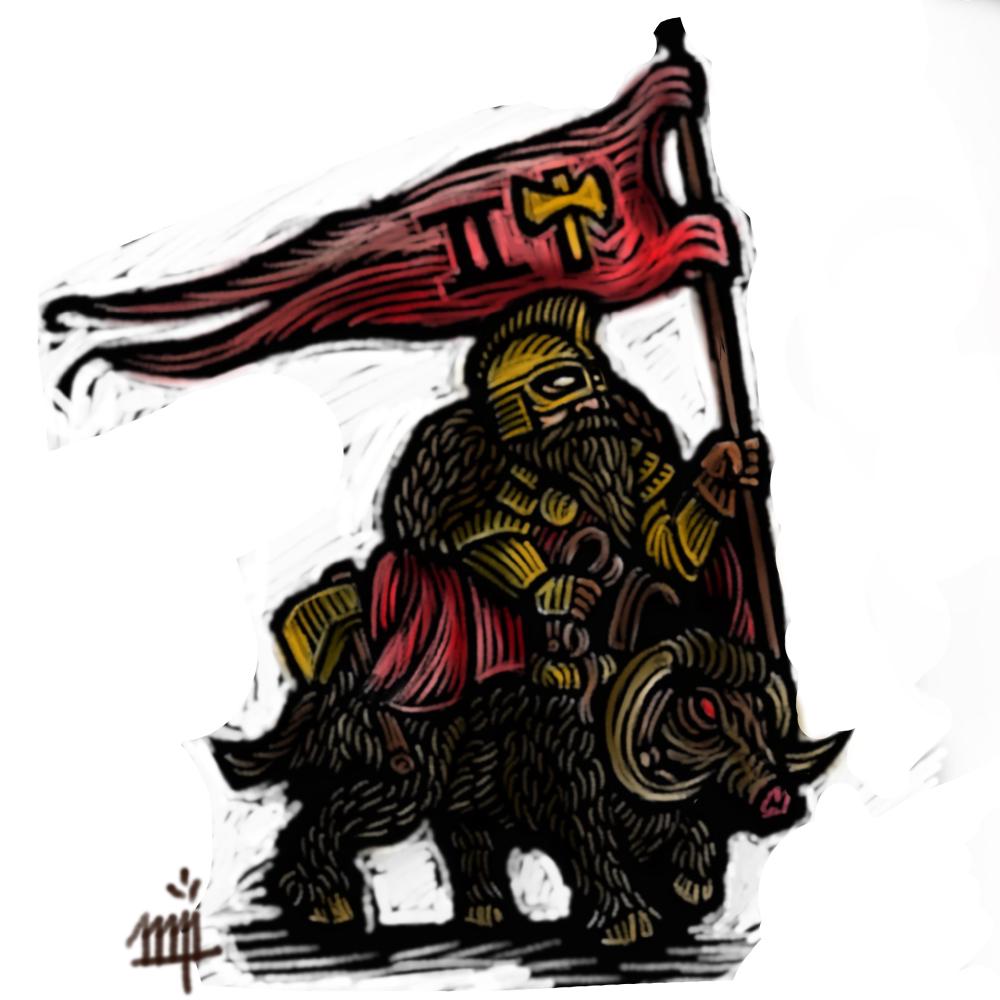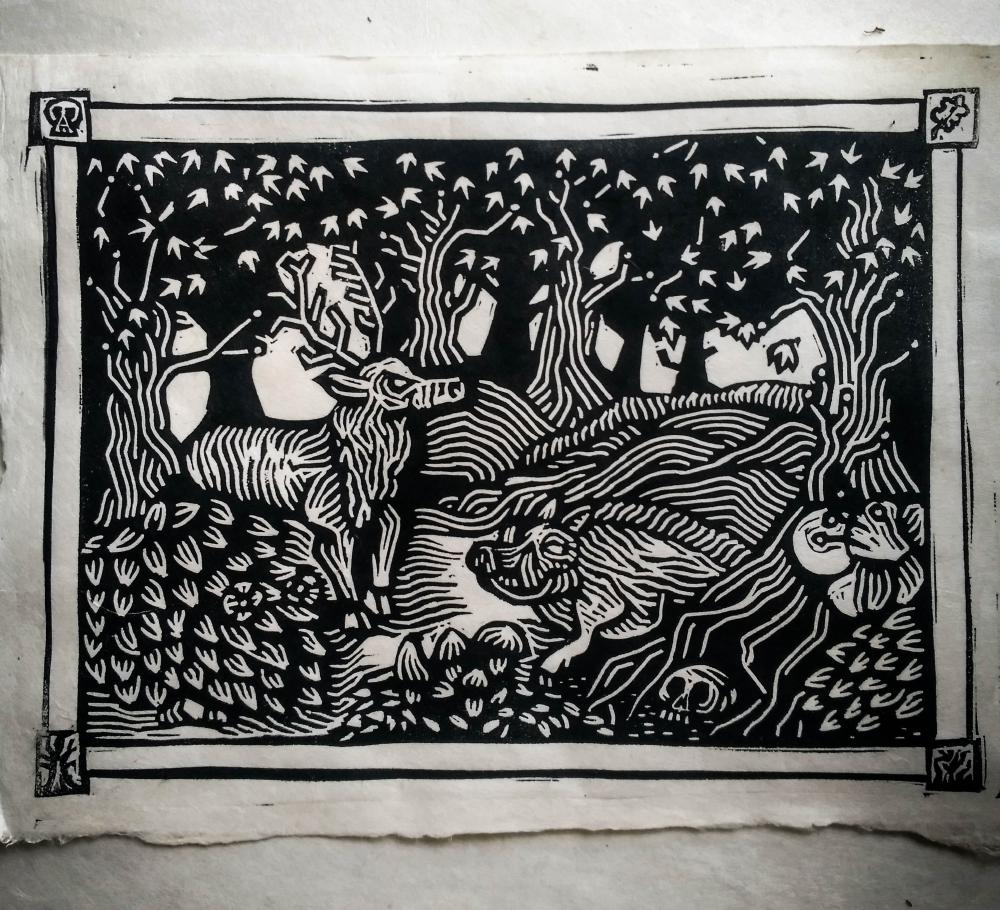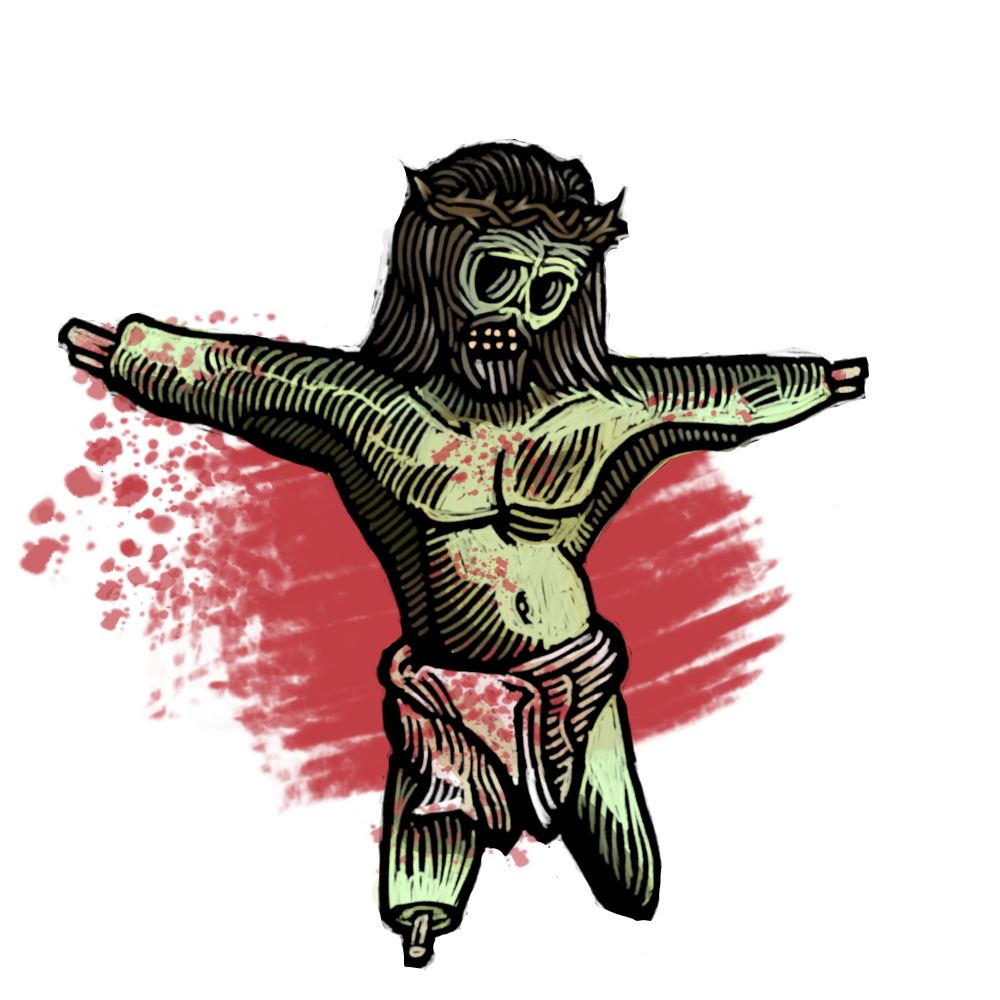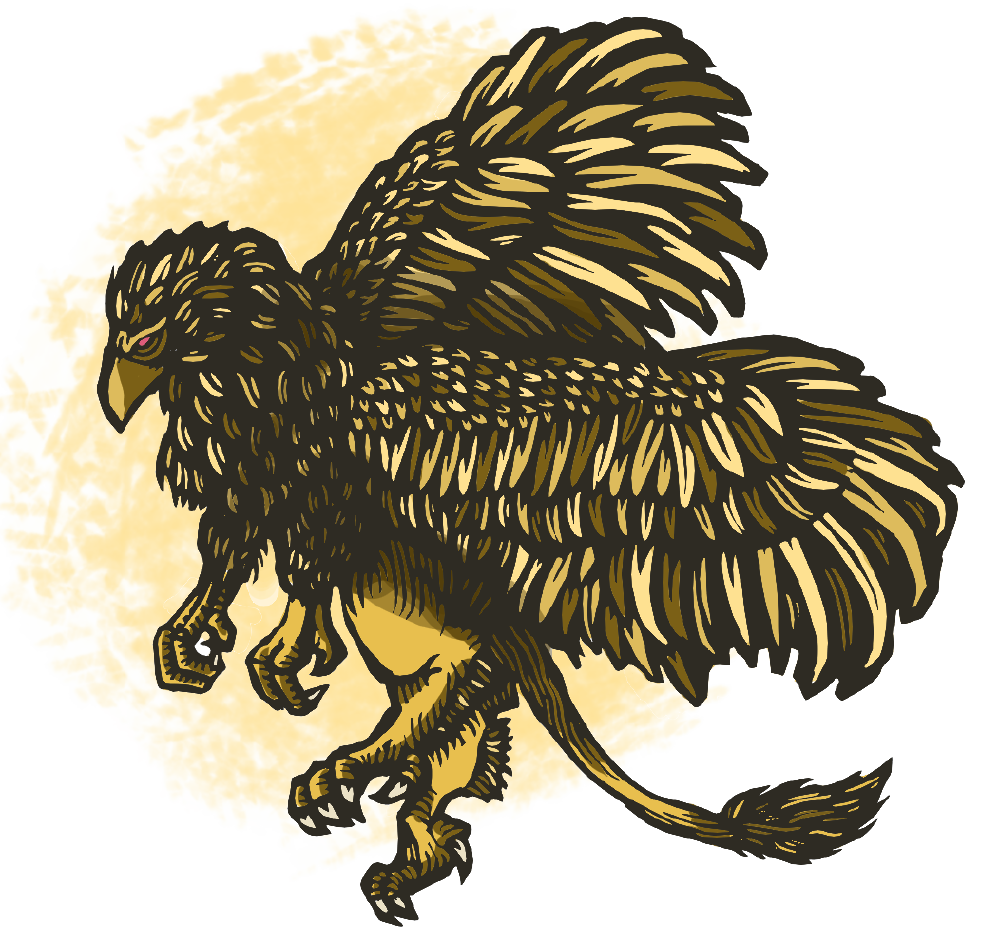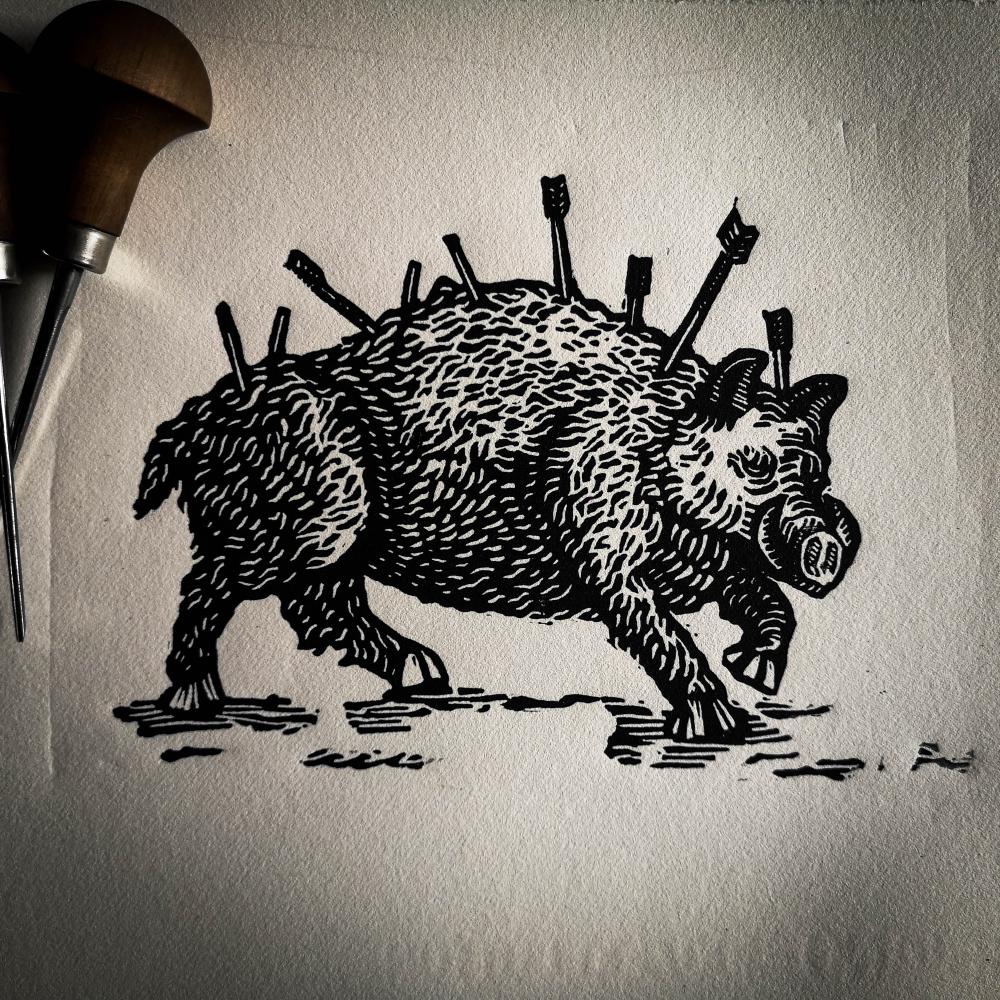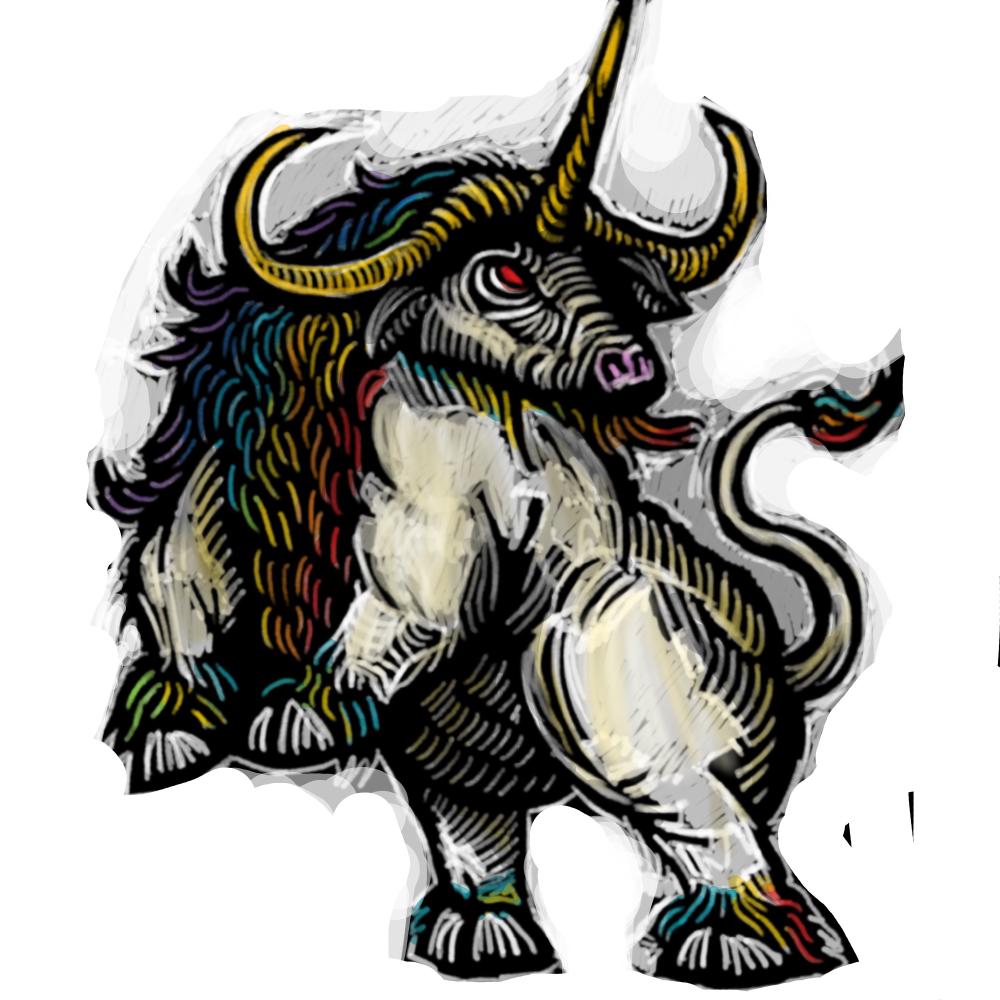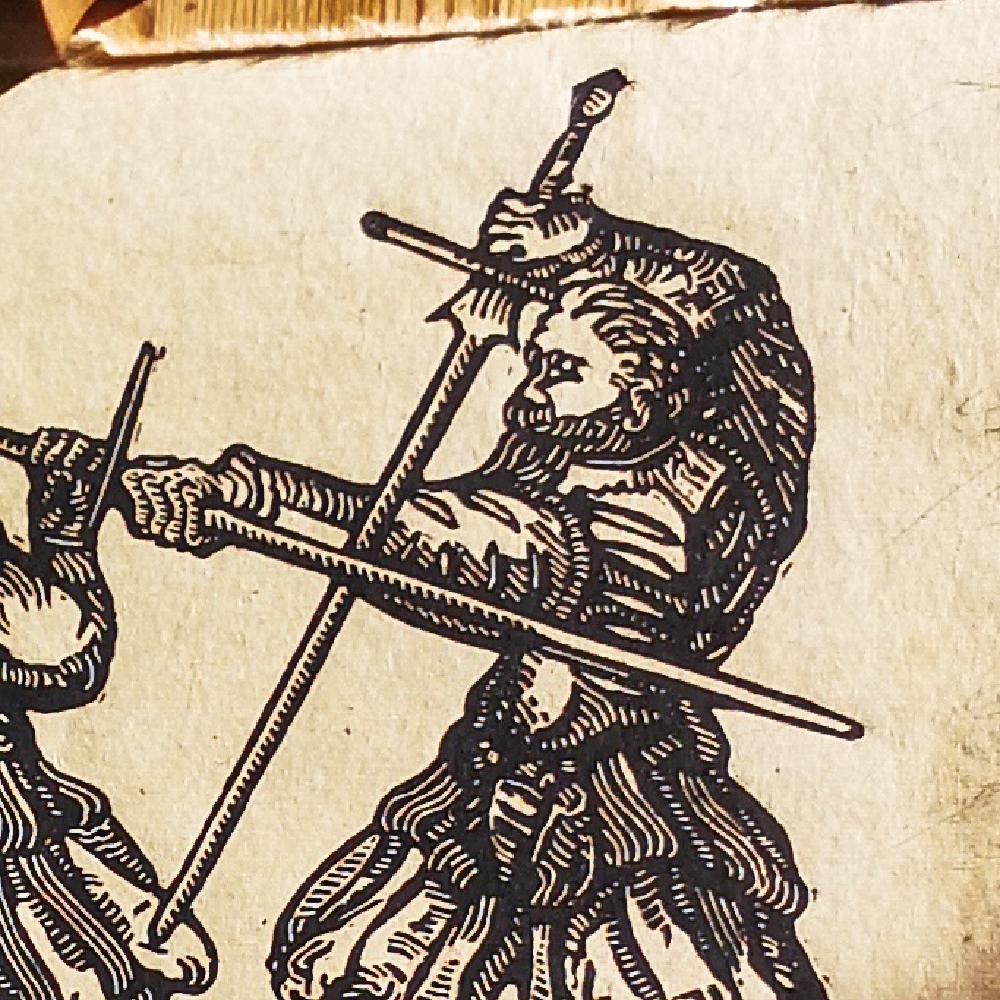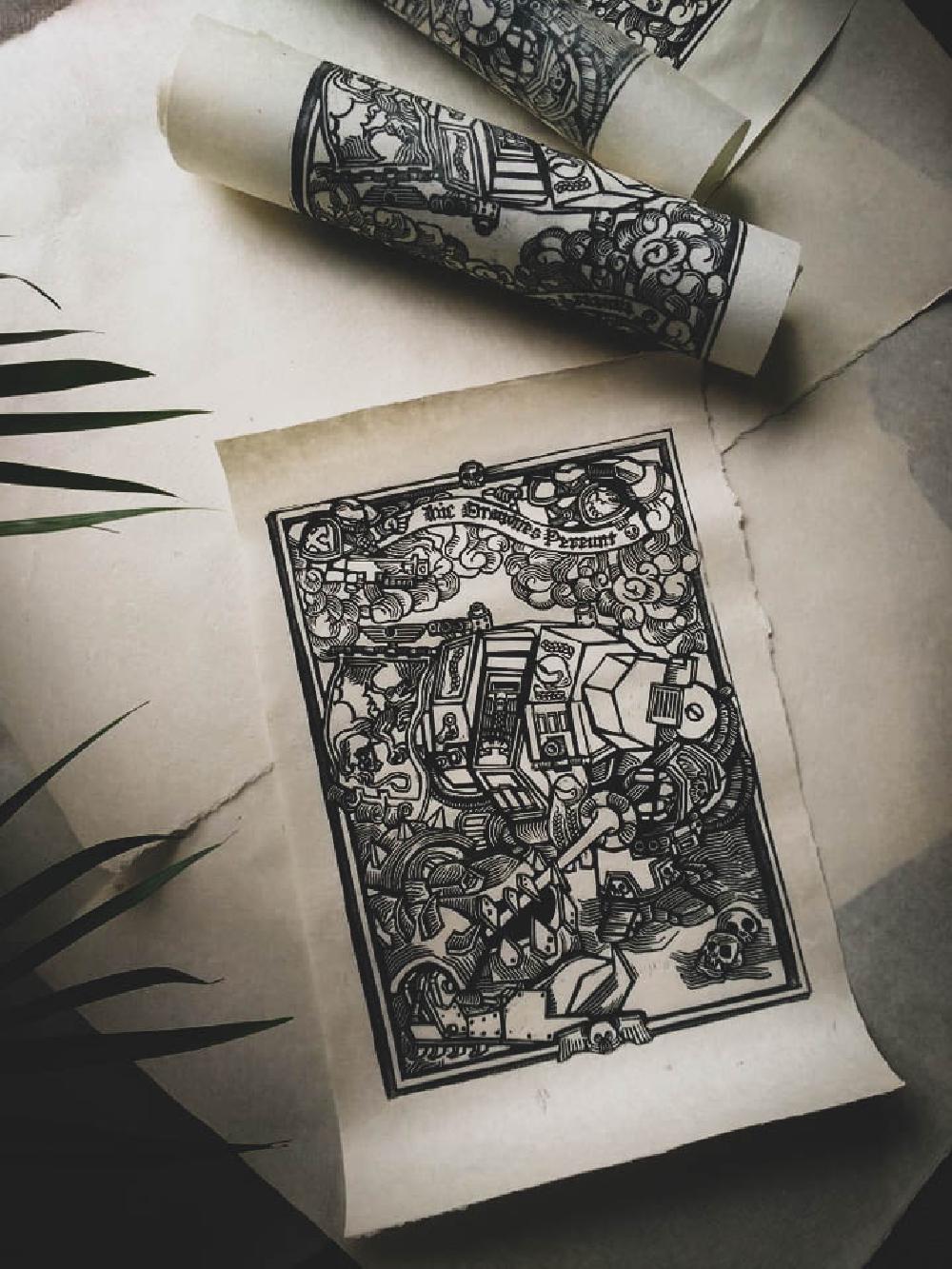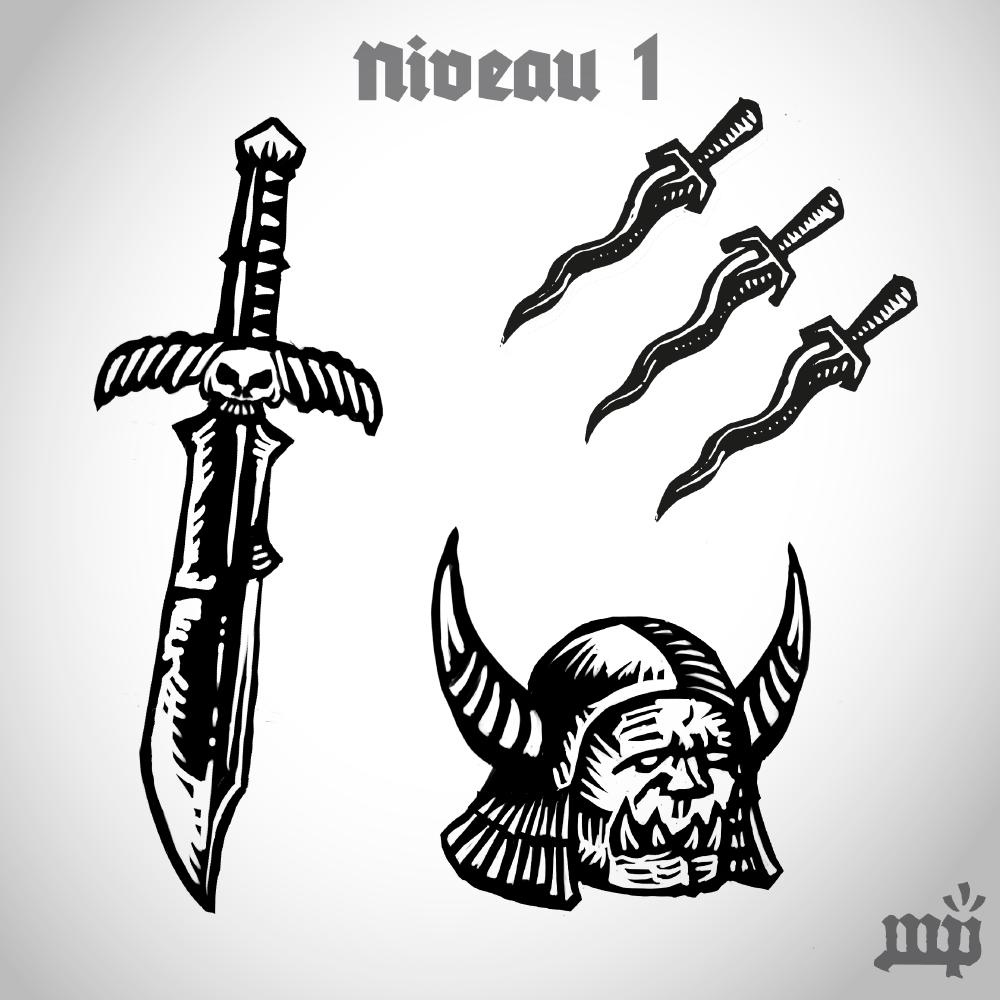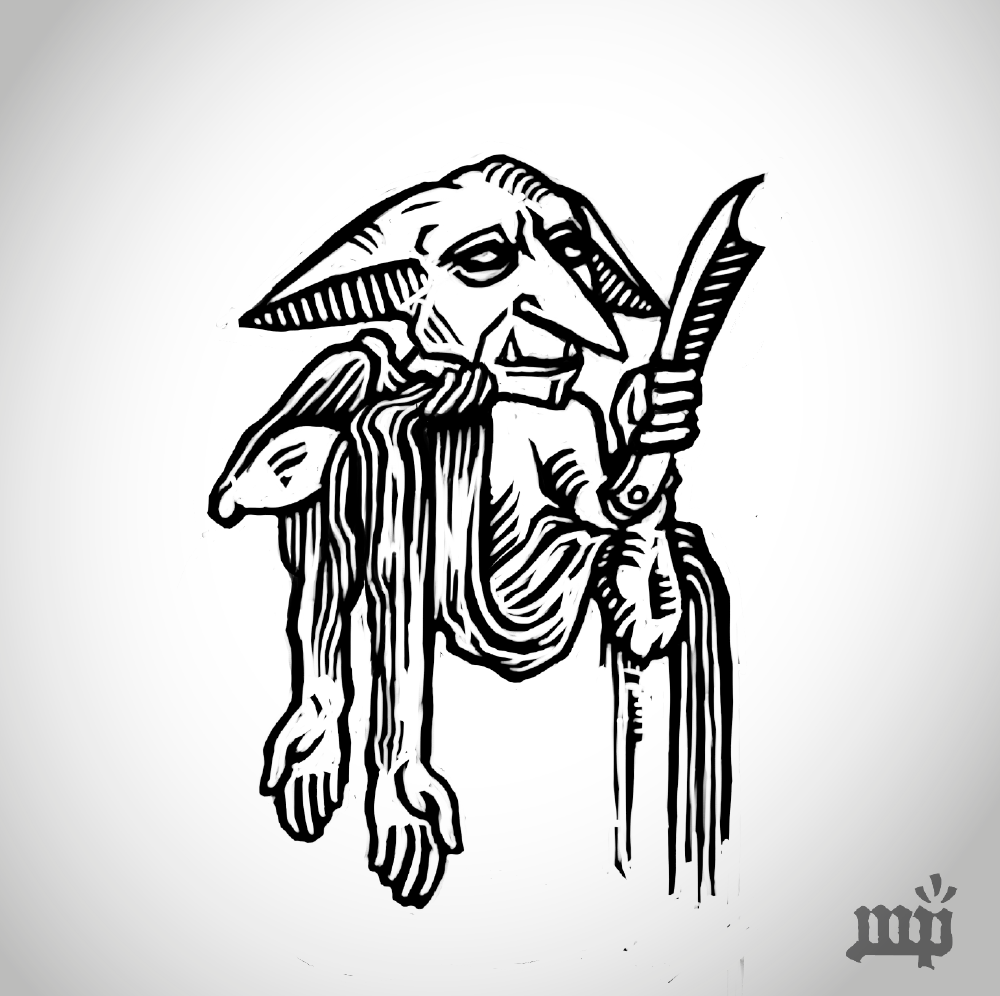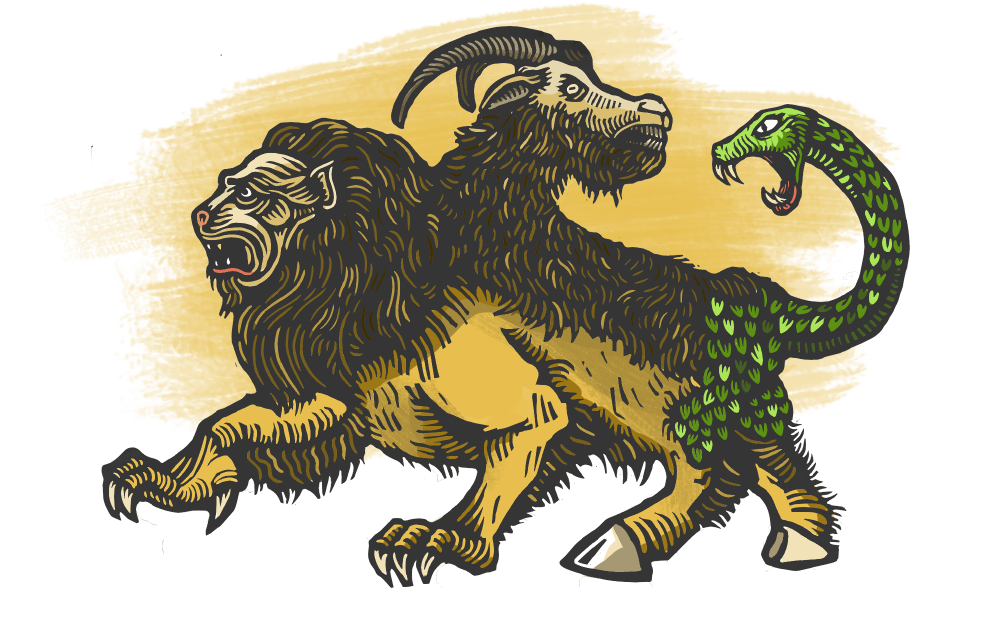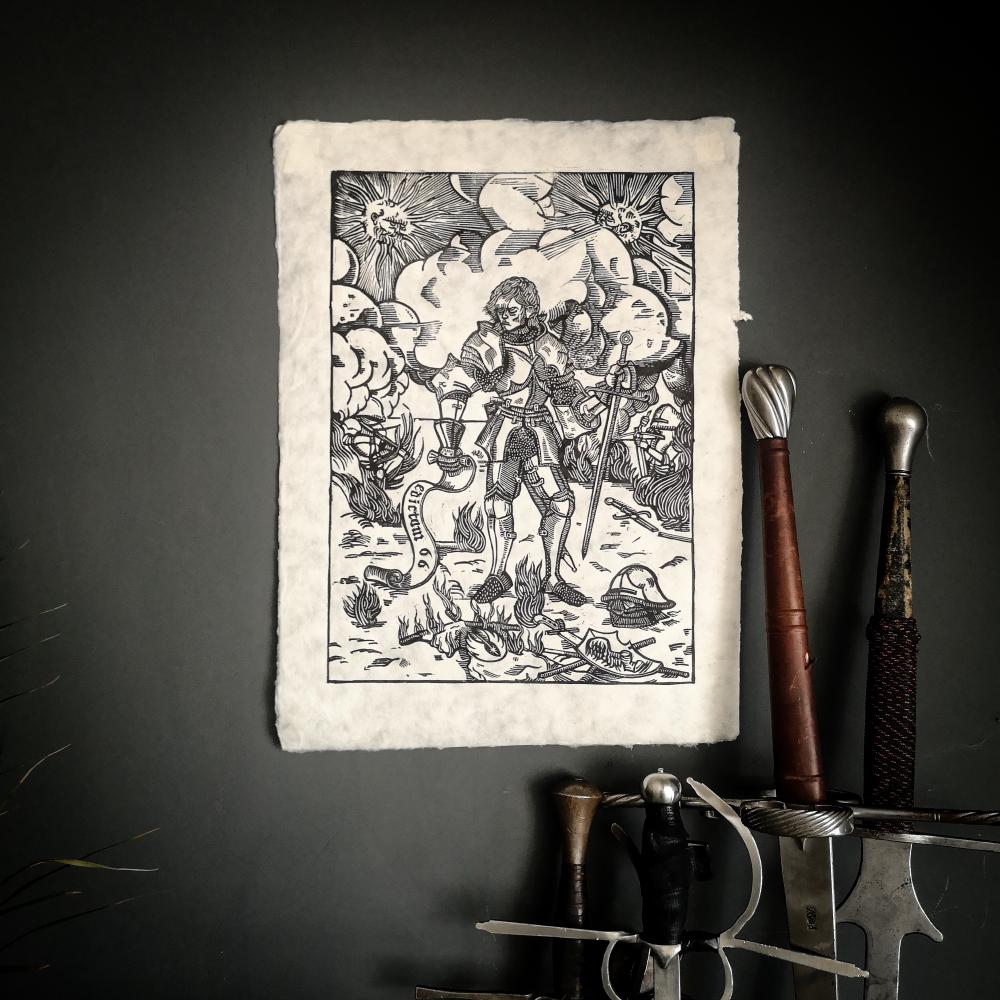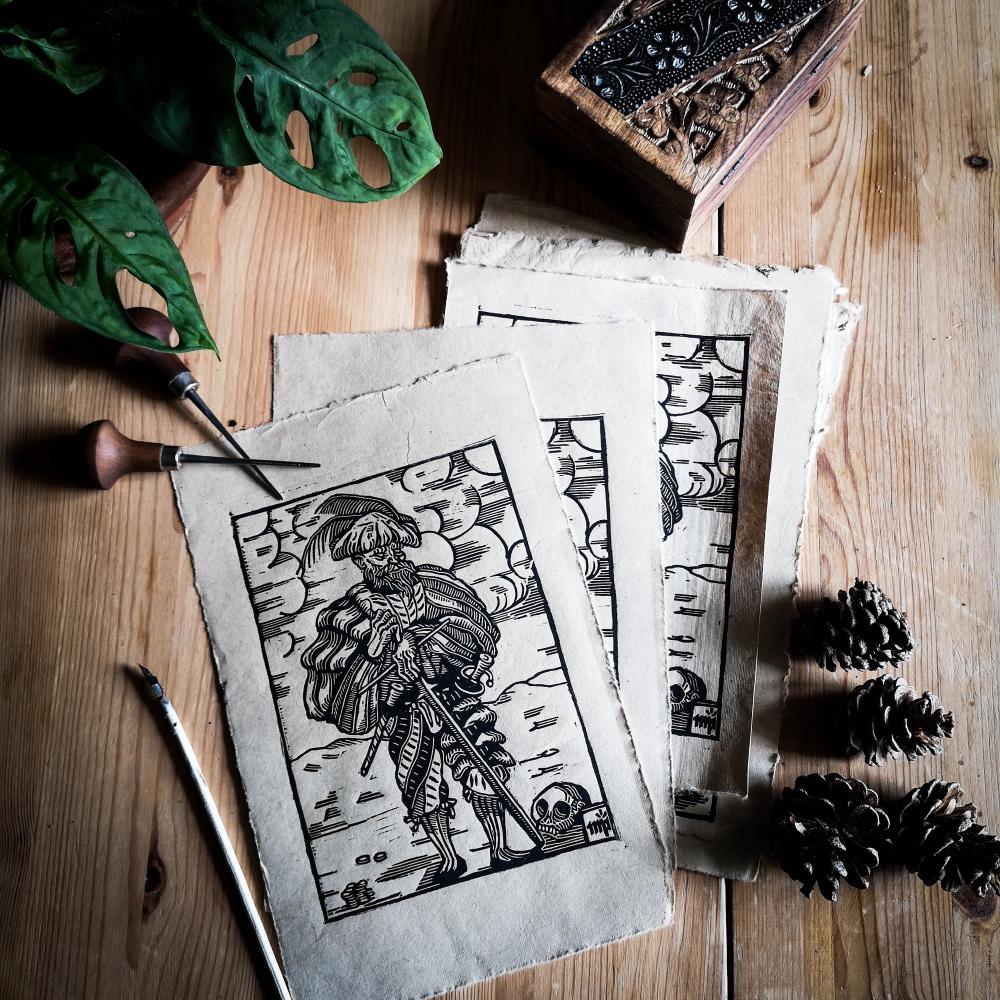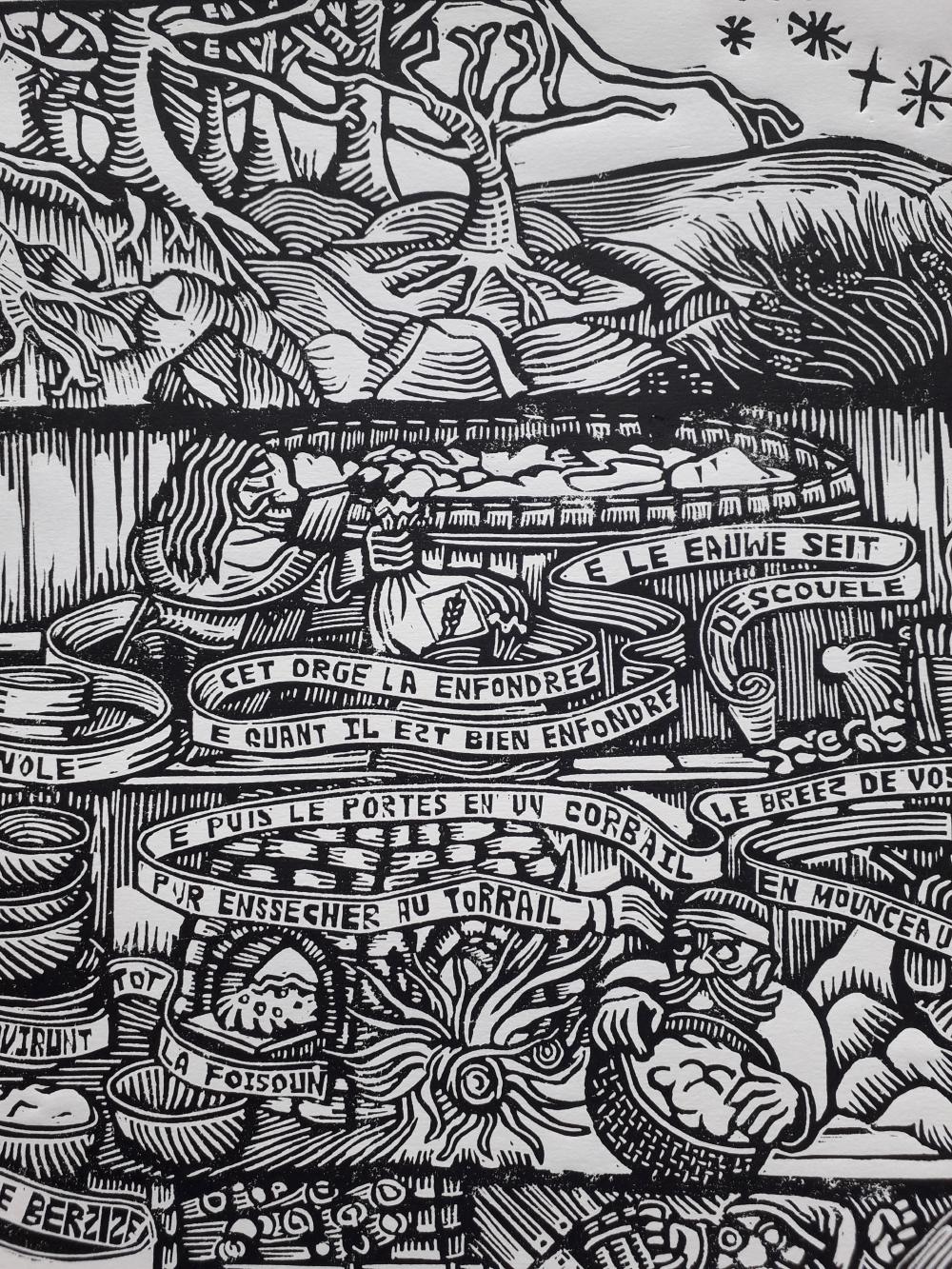Level 1
This project was a collab with my favourite local tattoo artist (from Dijon 🇫🇷). I was asked to provide a flash sheet, which theme was entirely free. So i went with that old tabletop RPG vibe that i love, inspired mostly by John Blanche, amongst other famous 80’s concept artists.
I decided to go with it and create 6 flashes, straight from the players handbook. Each design represents an item, spell or creature any 1st level player could encounter during its journey. Of course, keeping in mind i can continue and produce a Level 2 in case of success.
The technique
The sketches was originally drawn on transparent paper, then reported on the lino block, then inked with on the block. Once dried out, the block was carved with gouges: the linocut
To print out something, the carved block was inked with a brayer and printing ink and the sheet of paper was pressed using a printing linocut press.
Then, it was all digitalised to add some more details, correct the symmetry and be sure to provide the best tattoo material possible.
This was the first tattoo project that was not meant to be inked on my own skin, which would be followed by 3 more projects. I can’t believe how many people want my designs on their skin so badly
